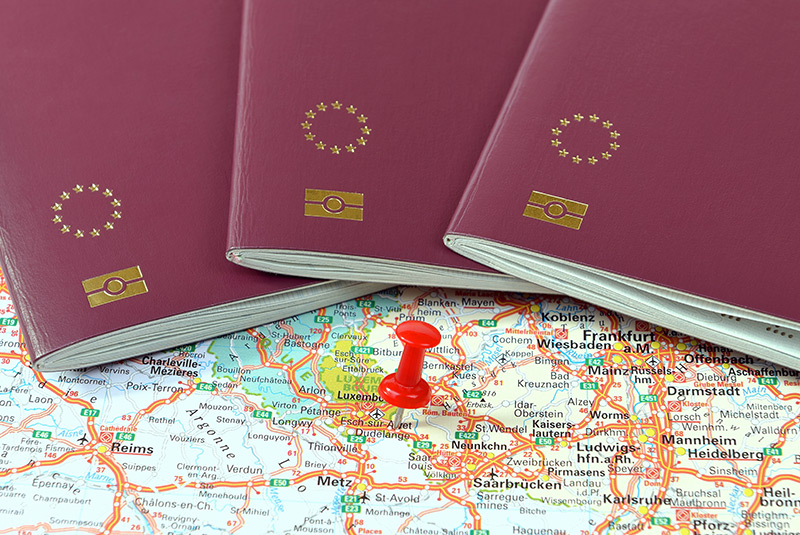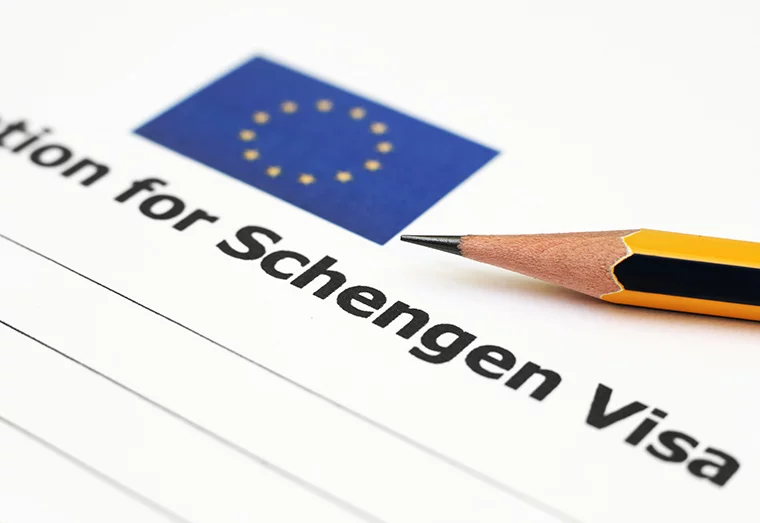Whether you're visiting Norway or planning to live here, understanding the Schengen Area is essential for hassle-free European travel.
If you’re visiting Norway or planning to live here, you’ve likely heard of the Schengen Area. But what exactly is it?

The Schengen Area is a travel zone covering much of Europe, where passport checks at internal borders have been abolished. This means you can move freely between participating countries as if they were one.
For tourists, residents, and business travellers alike, it’s one of the most significant and convenient aspects of modern European travel.
Although Norway is not a member of the European Union, it is part of the Schengen Area, along with most EU countries and a few others. That means people entering Norway from another Schengen country, such as Sweden or Germany, do not go through routine border checks.
It also means that Norwegian citizens can travel across most of Europe without needing to show a passport at every border.
To illustrate how this works, imagine taking a road trip from Tromsø, in Arctic Norway, all the way to Gibraltar, at the southern tip of Spain. That’s a journey of more than 5,000 kilometres through nine different countries. So how many times would you need to stop and show your passport?
If your answer is “just once,” when you first enter the Schengen Area, you already understand the core idea. If not, don’t worry. This guide will explain how Schengen works, why it exists, and why it matters, especially if you’re in or travelling to Norway.
Why Does the Schengen Area Exist?
Many people trace the origins of the Schengen Area back to the Treaty of Rome in 1957. This founding document of the European Economic Community (EEC) included an ambitious aim: to remove artificial barriers between the people of Europe.
In the aftermath of World War II, European leaders saw cross-border cooperation as a way to build peace, encourage prosperity, and prevent future conflicts.

Norwegians, however, might point to an earlier and more regional effort. In 1952, the Nordic Countries of Norway, Sweden, Denmark, and Finland established the Nordic Passport Union, an agreement that abolished passport checks between the participating countries.
Just two years later, the union was expanded to allow citizens to live and work freely across borders without needing a permit. Iceland joined the scheme in 1966.
This Nordic arrangement was a quiet but powerful example of how cross-border freedom could work in practice. It removed bureaucratic barriers, made travel easier for families and businesses, and fostered a sense of shared Nordic identity, all without sacrificing national sovereignty.
Elsewhere in Europe, however, things moved more slowly. While the Treaty of Rome outlined the vision, putting free movement into practice proved difficult. Internal borders raise complex issues.
How do you maintain law and order? How do you coordinate immigration policies? What about customs enforcement? And how do you ensure security without permanent border checks?
These questions were not easy to answer, especially with such political and cultural diversity across the continent. Countries feared losing control over their borders, and there was resistance from those who were wary of deeper European integration.
Despite these challenges, momentum slowly built. In 1985, five countries—Belgium, France, West Germany, the Netherlands, and Luxembourg—signed a groundbreaking agreement in the small Luxembourgish town of Schengen.
Their goal was to gradually eliminate border checks between them and to build common rules for visas and policing.
This agreement was created outside of the European Union, which was still the EEC at the time, because not all EEC members supported the idea of open borders.

The Schengen Agreement was a bold experiment. It showed that even without full political union, European countries could agree on shared rules to allow people to move more freely. Over time, more countries joined, and the Schengen Area became one of the most tangible examples of European cooperation.
Today, Schengen makes it possible to travel from northern Norway to southern Spain without once showing your passport at a land border. It has become part of daily life for millions of Europeans. For travellers, it is one of the most convenient aspects of visiting the continent.
How the Schengen Area Works
Even after countries agree to remove borders, putting that decision into practice takes time. The original Schengen members faced years of technical and legal challenges before border-free travel became a reality.
Thankfully, three of the five founding countries—Belgium, the Netherlands, and Luxembourg—had already abolished border controls between them as part of the Benelux Union. This gave the project an important head start.
One of the first practical steps came in the form of a green “visa disc” displayed on car windscreens. It allowed a quick visual check for vehicles crossing borders, significantly reducing delays at checkpoints.
While border controls still existed, this measure was an early symbol of what Schengen aimed to achieve — faster, frictionless travel between countries.
The next major milestone was the Schengen Convention, signed in 1990. This treaty set out the legal and operational framework for removing internal borders and strengthening external ones.
It also introduced shared visa policies and increased police cooperation across borders. Implementation took several years, but in 1995, full border-free travel finally began between the original member countries.

By 1997, most EU countries had committed to joining the Schengen Area, although a few — most notably the UK and Ireland at the time — opted out. These countries maintained their own border policies and were never part of the Schengen system.
For Norway and Iceland, both part of the longstanding Nordic Passport Union, the situation was different. Their citizens already enjoyed passport-free travel with neighbouring countries. In practice, they were operating under Schengen-like conditions well before formally joining.
Rather than duplicating efforts, Norway and Iceland signed agreements to become official Schengen members, despite not being in the EU.
They became the first non-EU members of the Schengen Area. Today, there are four non-EU countries in the system: Norway, Iceland, Switzerland, and Liechtenstein. The latter two joined later, as part of the wider European Free Trade Association (EFTA).
Together, these agreements created a framework that allows passport-free travel across much of Europe, regardless of EU membership. While the Schengen Area continues to evolve, it remains one of the most visible and valued forms of European cooperation.
Benefits of the Schengen Area
Each year, there are around 1.3 billion crossings of Schengen borders. One of the biggest advantages of the system is financial.
By eliminating routine passport checks between member countries, governments save significant resources by no longer needing to staff internal borders.
At the same time, the cost of securing the external borders is shared across all member states, ensuring that smaller countries on the periphery do not bear an unfair burden.
There are also clear benefits for trade. Goods can move more efficiently across the region, without being delayed at internal border checkpoints. In the past, shipments could be held up for hours or even days while customs checks were carried out.
This increase in the smooth movement of both people and goods has a measurable economic impact. According to some estimates, the effect is comparable to cutting tariffs on goods by 0.7%. That might seem modest, but in the context of European trade, it equates to hundreds of millions of euros in annual value.

For travellers, one of the most practical benefits—and one that was not even part of the original plan—is the Schengen Visa. Citizens from outside Europe can apply for a short-stay visa from any Schengen country, and that visa then grants access to the entire area.
This shared visa policy has made travel planning much easier for visitors and has simplified administration for smaller countries. Some, like Estonia, no longer issue their own short-term visas at all.
Instead, prospective visitors can simply apply through a neighbouring country such as Finland, and then travel freely within the Schengen Zone, Estonia included.
This has led to some countries, such as Estonia, no longer issuing visas of any kind as they have no need to. If you want to visit Estonia, simply get a visa from Finland or any of the other countries and you’re all set.
Which Countries Are Part of the Schengen Area?
Today, Schengen membership is expected of European Union countries, but there are still a few exceptions.
At the time of writing, Romania, Bulgaria, and Croatia are working toward full Schengen membership, although they have not yet met all the required criteria.
Cyprus is also interested in joining, but the division between the Turkish and Greek parts of the island makes its application more complex.
Two former EU members, the United Kingdom and Ireland, opted out of Schengen entirely. These countries have long operated a Common Travel Area, allowing free movement between them.
When Schengen was introduced, both governments believed participation could complicate efforts to resolve the Northern Ireland conflict. As a result, they remained outside the area.
However, both the UK and Ireland have taken part in certain Schengen-related systems, including cross-border policing and criminal database cooperation.
This allows authorities to work together to prevent and investigate crime across borders, even without passport-free travel.
Temporary Border Checks Still Happen
Although Schengen allows for passport-free travel across much of Europe, it is not an entirely borderless system. In exceptional circumstances, countries can reintroduce border checks for a limited time.
This has happened for various reasons. Portugal reintroduced border controls while hosting major events like the European Football Championship and the Lisbon Summit.
Other countries reinstated checks in response to the European migrant crisis, and almost all Schengen states suspended free movement during parts of the global health crisis of 2020-22.
Not All Territories
Schengen generally applies to mainland European territories, but overseas and autonomous regions are often excluded.
For example, Greenland and the Faroe Islands are not part of Schengen, even though they belong to the Kingdom of Denmark. That said, they maintain relatively open borders through bilateral agreements.
As for Gibraltar, the British Overseas Territory at the southern tip of Spain, full passport checks remain in place for those entering or leaving.
Always Carry ID
While Schengen removes the need to show a passport at internal borders, you may still be asked for identification by police or other authorities when travelling. It is always a good idea to carry your passport or national ID card, even if you do not expect to need it.
The Schengen Area offers significant benefits for travellers, workers, and businesses across Europe.
But in many ways, it was the Nordic countries who led the way. Their early cooperation through the Nordic Passport Union proved that open borders were not only possible, but practical.


Hello dear company or members I just want to ask question.? I was in Norway 2007 for FIRST LEGO League Scandinavia in Bodø I applied project and they invite me to join project.. I stayed there about three months… So If I come one more time to the Norway do I need to Schengen visa or not!!
Best regards
Hi, it’s difficult to offer specific advice on individual cases.
If you needed a visa last time, and it has expired, it’s likely you will need a new one to visit again.
Visitors who need a visa are those outside of the EU whose country is not exempt from visa requirements.
A list of countries that have visa-free travel to the Schengen area can be found on wikipedia.
Hope this helps!
How long can I stay in Shenzhen area each time I visit, I am from uk. Normally spend most of winter in Spain and Portugal, just like loads of others in motorhomes. Before Brexit and afterwards because at the moment nobody checks, gov web site says 90 days. But how does anyone know you are there.
Could cyprus be a schengen country?